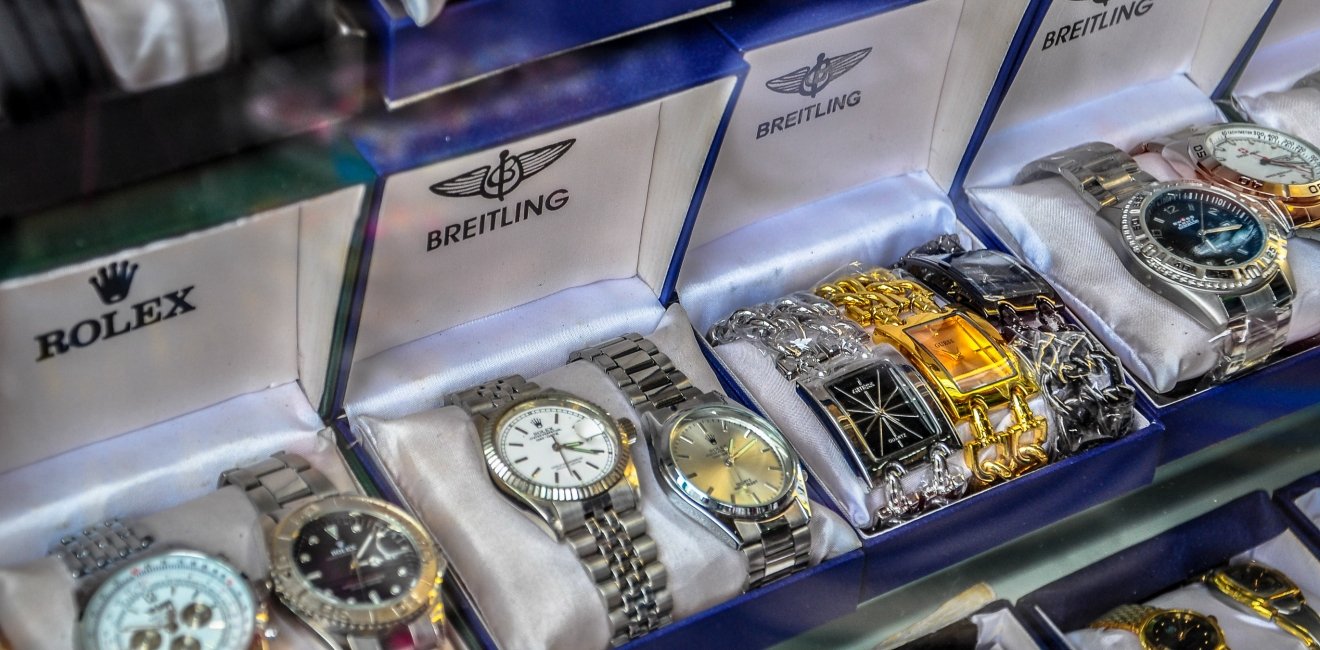
A blog of the Wilson Center

83 percent of counterfeit goods seized by U.S. Customs and Border Patrol last year originated in China.
Each year, the Office of the United States Trade Representative (USTR) publishes a Review of Notorious Markets for Counterfeiting and Piracy (the “Notorious Markets List”). It identifies online and physical markets that play a significant role in trademark counterfeiting or copyright piracy. In its 2020 report, the USTR highlighted China as the world’s “primary source” of counterfeit products.
Counterfeiting has serious economic consequences, reducing revenue for legitimate businesses and slowing overall economic growth. In the U.S., counterfeit goods cost the economy between $29 and $41 billion each year, according to a 2017 analysis by the Commission on the Theft of American Intellectual Property. International trade in counterfeit goods totaled an estimated $509 billion in 2016, accounting for 3.3% of all trade worldwide. As our world becomes increasingly digital, the threat of counterfeiting in e-commerce is becoming ever more prevalent.
Counterfeiting isn’t just about frivolous goods or luxury handbags. In some cases, it also poses a significant risk to public health and safety since counterfeit goods are often not manufactured to the same standards and specifications as the originals. Counterfeit prescriptions may contain too much or too little of the active ingredient, and counterfeit airbags may not inflate properly. Discoveries of counterfeit medical supplies, such as N-95 masks and other PPE, have proliferated in the last year—in the midst of the pandemic.
In January 2020, the U.S. and China signed a historic trade agreement requiring China to institute reforms to crack down on counterfeiting. In its early days, the Biden Administration has taken a similar approach, maintaining pressure on China to respect U.S. intellectual property rights. In other words, successive administrations have taken steps to try to pressure and encourage China to live up to its international intellectual property obligations.
India is the world’s largest vaccine maker, but only 5 percent of Indians are vaccinated against COVID-19.
India has long been a global leader in vaccine production, and chief among its operations is the Serum Institute of India. Founded in 1970 and run by father and son duo Cyrus and Adar Poonawalla, Serum is the world’s largest vaccine manufacturer. It has produced more than 1.5 billion total doses of various vaccines, and is exporting them to 170 countries. This includes vaccines for polio, tetanus, diphtheria, measles, and, now, COVID-19.
Serum began mass-producing potential COVID-19 vaccines (especially the Oxford-Astrazeneca vaccine) early in the pandemic, even before clinical trials had been completed. The plan was that once the vaccines were proven effective and granted emergency use authorizations, the company would immediately begin distribution. Hopes were high that Serum would make a huge difference in the battle against the pandemic—in India and around the world.
Unfortunately, Serum has experienced a series of internal problems, including a manufacturing plant fire in January and an inability to ramp up supply to meet demand. There have also been missteps by India’s government , including technical issues with its vaccine registration platform and a failure to order a sufficient number of doses.
The situation became more urgent due to India’s recent COVID-19 surge. In May, reported cases in the country hit a peak of more than 400,000 per day, and reported deaths spiked to 4,500 per day. In fact, more than 400,000 Indians have already lost their lives to the disease. Although these numbers are currently declining, experts warn that low vaccination rates leave India at risk for a future surge in infections.
Vaccine issues inside India almost always contribute to vaccine issues outside of India. Public health leaders planned on Serum being the main vaccine supplier for COVAX, the global initiative to ensure equitable vaccine distribution to low- and middle-income countries. However, in May Serum announced that, due to domestic demand, it won’t be able to export COVID-19 vaccines until the end of 2021.
As is the case with so many challenges facing this generation, we have to care about what goes on in far off lands.
The U.S.’s top two trading partners in 2021 have been Mexico and Canada.
Trade is important for American leadership and vitally important for American jobs. After all, 95.75% of the world’s population lives outside the United States—people, consumers, customers. According to the International Trade Administration, over 10 million American jobs are tied to exports.
When policy makers and the public talk about trade, China seems to dominate the discussion. After all, 1 out of every 5 people in the world resides in China. But at the moment, China isn’t our largest trading partner: Mexico and Canada are.
As of May, the U.S. had traded $262.8 billion and $258.3 billion worth of goods with Mexico and Canada, respectively, in 2021. In comparison, trade with China amounted to $248.7 billion. Looking at the export market alone, the difference is even more pronounced. During the same time period, U.S. exports to Mexico and Canada both exceeded $100 billion ($109.4 billion and $122.1 billion, respectively). Meanwhile, exports to China came in at only about $59 billion.
The last free trade agreement concluded by the U.S. was the United States-Mexico-Canada Agreement (USMCA), which went into effect on July 1, 2020, officially replacing NAFTA. Even in an era when “trade” has somehow become a dirty word, Congress supported USMCA by the largest bipartisan vote it has given any modern trade deal (385 to 41 in favor in the House and 89 to 10 in favor in the Senate). USMCA will boost the region’s overall competitiveness on the global stage. It contains new dispute resolution mechanisms, incorporates the digital economy, and provides strengthened support for labor rights, environmental standards, and small businesses.
Last month, trade ministers from the three countries met at the Wilson Center to discuss the lessons learned from the USMCA’s first year and their commitments to the agreement going forward. While much work remains to be done in fully implementing the agreement, there’s clearly momentum behind the trading partners as they push forward to realize USMCA’s potential.
Author

Explore More in Stubborn Things
Browse Stubborn Things
Spying on Poachers

China and the Chocolate Factory

India: Economic Growth, Environmental Realities
